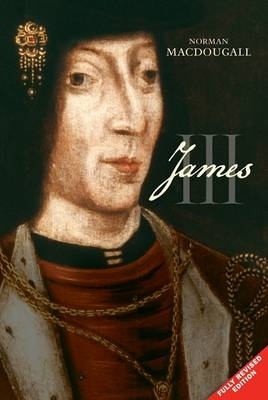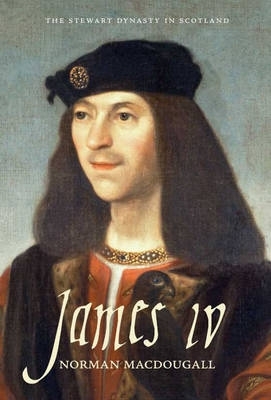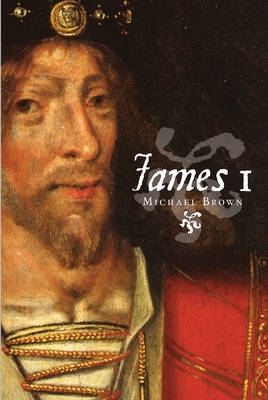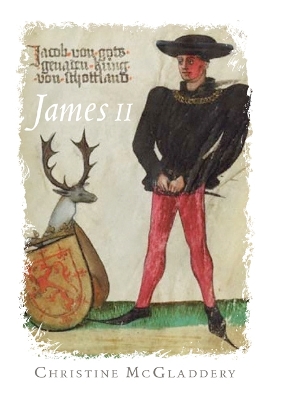The Stewart Dynasty in Scotland
5 total works
James VII and II is one of the least studied monarchs of Scotland, and has previously mostly been studied from an English perspective or as the muddled victim of the revolution of 1688/9 which delivered for Britain much-vaunted political emancipation. This book provides the first complete portrait of James as a Stewart prince of Scotland, as duke of Albany and King of Scots. It re-evaluates the traditional views of James as a Catholic extremist and absolutist who failed through incompetence, and challenges preconceptions based on strong views of his failings, both in popular belief and serious history. Investigating the personality and motives of the man, this biography assesses James as commander, as Christian and as king, but also as family man and Restoration libertine - a prince of his time. Painting a picture of James from cradle to grave, from childhood to resigned exile, it brings him to life within his Scottish context and as a member of the royal line of Scotland. The journey from dashing young cavalry commander to pious prince in exile appears oddly incongruous given the political and personal trials that lay between.
That journey was much more of Scotland than previous studies have suggested - indeed, James was in many ways the last King of Scots.
James III is the most enigmatic of the Stewart kings of Scotland. Variously characterised as artistic, peace-loving, morbidly suspicious, treacherous, pious, lecherous and lazy, King James was much criticised by contemporaries and later chroniclers for his failure to do his job in the manner expected of him, and particularly for his reliance on low-born favourites to the exclusion of his 'natural' counsellors, the nobility. Specific complaints included debasement of the coinage, royal hoarding of money, failure to staunch feuds and to enforce criminal justice. Yet James III has also been seen as a major patron of the arts, as Scotland's first Renaissance king, and as the architect of an intelligent and forward-looking foreign policy. In this new study, the author explores all these areas and seeks to explain why King James was challenged by a huge rebellion in 1482, which he narrowly survived, and why he succumbed to a further rising in 1488, which placed his eldest son on the throne as James IV.
James IV is the best-known of all the late medieval Scottish rulers. Widely praised by his contemporaries, he combined the qualities of successful medieval monarch with a wide interest in the arts and sciences, while remaining acutely conscious of the need to enhance the prestige of his dynasty throughout Europe. This excellent study examines all aspects of James IV's sovereignty, explains his popularity and his highly successful kingship and assesses reasons for the disastrous end to the reign when the king and a large population of the Scottish nobility were eliminated in a single afternoon in 1513 at Flodden. This book represents Scottish historical research at its very best. It is meticulously researched and sensitively written.
Conditioned by a childhood surrounded by the rivalries of the Stewart family, and by eighteen years of enforced exile in England, James I was to prove a king very different from his elderly and conservative forerunners. This major study draws on a wide range of sources, assessing James I's impact on his kingdom. Michael Brown examines James's creation of a new, prestigious monarchy based on a series of bloody victories over his rivals and symbolised by lavish spending at court. He concludes that, despite the apparent power and glamour, James I's 'golden age' had shallow roots; after a life of drastically swinging fortunes, James I was to meet his end in a violent coup, a victim of his own methods. But whether as lawgiver, tyrant or martyr, James I has cast a long shadow over the history of Scotland.
In this study of the reign of James II of Scotland, the king is viewed in the context of the Stewart monarchy, from his struggles to overcome his early adversity and the legacy of his father's style of kingship, to the serious political crises of his reign. The relations between the king and his subjects, and the complex balance of power in medieval Scotland are examined, particularly the significant crisis precipitated by James II's attack on the Black Douglases, the greatest of all late medieval magnate families. The changing nature of political involvement among the nobility and the role of Parliament in influencing events are explored, as are the efforts of the king to recover and promote royal authority in the final years of his reign.
The role of James II in the wider European context is also studied with a view to shedding light on contemporary perceptions of the Stewart monarchy both at home and abroad. The study is based on contemporary chronicle and official sources, and consideration is also given to later, highly coloured views of James II, which have influenced popular views of the king to the present day.




